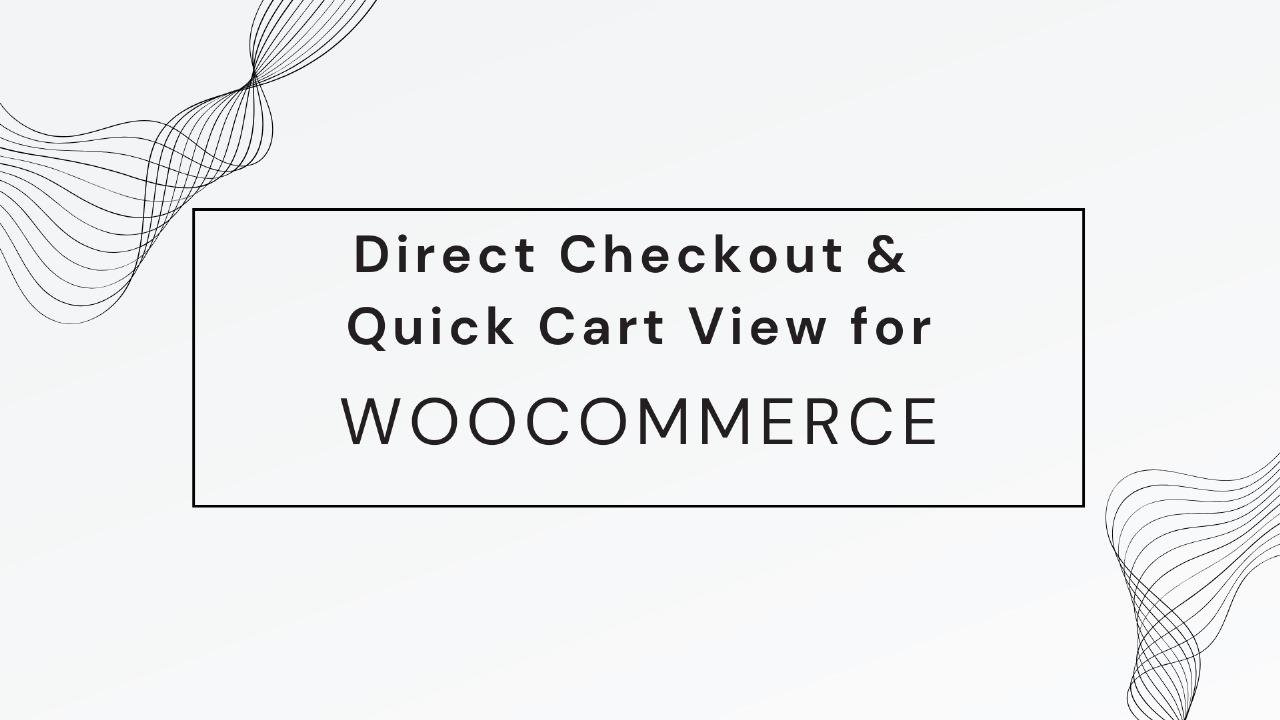-
Noticias Feed
- EXPLORE
-
Blogs
-
Eventos
Maximizing Conversions: A Comprehensive Guide to Streamlining Your WooCommerce Checkout Process

In the dynamic realm of eCommerce, the checkout process is the final gateway between a potential customer and a completed sale. A clunky, multi-step checkout can be the Achilles' heel of your online store, leading to abandoned carts and lost revenue. By optimizing your WooCommerce checkout with features like direct checkout, one page checkout, and popup checkout, you can transform this critical stage into a seamless experience that drives conversions. Let’s dive into how these strategies work and how to implement them effectively.
Why Checkout Optimization Matters More Than Ever
Imagine a shopper who’s excited to purchase your product but faces a labyrinth of forms, redirects, and loading screens. According to the Baymard Institute, the average cart abandonment rate hovers around 70%, with complicated checkout processes being a top culprit. Simplifying this journey isn’t just a convenience—it’s a strategic necessity. A streamlined checkout reduces friction, keeps customers focused, and directly impacts your bottom line.
WooCommerce Direct Checkout: Skip the Cart, Speed Up Sales
What Is Direct Checkout?
Traditional WooCommerce workflows route customers from the product page to a cart and then to checkout. Direct checkout eliminates the cart page entirely, allowing shoppers to proceed straight to payment after clicking “Add to Cart.” This method is particularly effective for single-product stores, digital goods, or impulse purchases where quick decisions matter.
Why It Works:
-
Reduced Steps: Fewer clicks mean fewer opportunities for distraction.
-
Mobile Optimization: Ideal for smartphone users who prefer swift transactions.
-
Higher Conversions: By bypassing the cart, you minimize the risk of abandonment during navigation.
Implementation Tips:
-
Use Plugins: Tools like WooCommerce Direct Checkout or Checkout Field Editor let you customize redirects.
-
Test Scenarios: Apply direct checkout to specific products (e.g., low-cost items) rather than your entire inventory.
-
Preserve Cart Access: Ensure customers can still view their cart if needed, such as through a floating icon or menu link.
One Page Checkout: Simplify, Condense, Convert
The Power of a Unified Experience
A woocommerce single page checkout consolidates all checkout elements—cart review, shipping details, payment options—into a single, scrollable page. This approach aligns with user experience (UX) principles that prioritize simplicity and reduce cognitive load.
Benefits:
-
Clarity: Customers see all required fields upfront, reducing errors.
-
Speed: No waiting for multiple pages to load.
-
Mobile-Friendly: Perfect for smaller screens where tab-switching is cumbersome.
How to Set It Up:
Plugins like WunnelKit or WooCommerce One Page Checkout let you design a cohesive layout. Enhance trust by adding security badges, guest checkout options, and multiple payment gateways (e.g., PayPal, Stripe).
Pro Tip: Use conditional logic to hide irrelevant fields. For instance, hide shipping address fields for digital downloads.
Popup Checkout: Engage Without Redirecting
Modernizing the Checkout Experience
Popup checkouts allow customers to complete purchases in a modal window that overlays the product page. This method keeps users immersed in their shopping journey, reducing bounce rates and maintaining momentum.
Ideal Use Cases:
-
Mobile Shoppers: Compact popups are easier to navigate on phones.
-
Limited-Time Offers: Capitalize on urgency with instant checkout.
-
Subscription Services: Simplify repeat purchases.
Best Practices:
-
Design Matters: Ensure popups are visually clean, with prominent CTAs like “Complete Purchase” or “Pay Now.”
-
Speed Optimization: Use lightweight plugins like CartFlows to prevent lag.
-
Exit-Intent Triggers: Deploy popups when users hover toward closing the tab to recapture attention.
Fast Checkout: The Need for Speed in eCommerce
Why Speed Is Non-Negotiable
Google’s research reveals that 53% of mobile users abandon sites taking longer than 3 seconds to load. A fast checkout isn’t just about convenience—it’s a competitive advantage.
Strategies for Lightning-Fast Checkouts:
-
Performance Tweaks: Optimize images with tools like ShortPixel, enable caching via WP Rocket, and use a CDN like Cloudflare.
-
Minimal Fields: Remove non-essential fields (e.g., “Company Name” for B2C).
-
Guest Checkout: Not everyone wants an account—offer a guest option.
-
Accelerated Payment Methods: Integrate one-click options like Apple Pay or Google Pay.
Putting It All Together: A Step-by-Step Optimization Plan
-
Audit Your Current Checkout: Use heatmaps (e.g., Hotjar) to identify friction points.
-
Prioritize Mobile UX: Over 60% of eCommerce traffic is mobile—test your checkout on multiple devices.
-
A/B Test Variations: Tools like Nelio A/B Testing or Optimizely can compare checkout layouts.
-
Monitor Analytics: Track metrics like time-to-checkout and abandonment rates in Google Analytics.
Conclusion: Turn Checkout Chaos into Conversion Success
Your checkout process shouldn’t be a hurdle—it should be the smoothest part of the customer journey. By integrating direct checkout for speed, one-page layouts for simplicity, popup checkouts for engagement, and performance optimizations for lightning-fast loading, you create a frictionless path to purchase.
Ready to revolutionize your WooCommerce store? Start by implementing one strategy at a time, measure the impact, and iterate. The result? Happier customers, fewer abandoned carts, and a healthier revenue stream.
Final Tip: Regularly update your plugins and WooCommerce core to leverage the latest speed and security enhancements. Stay ahead of the curve, and your conversions will follow!







